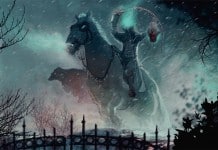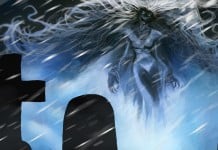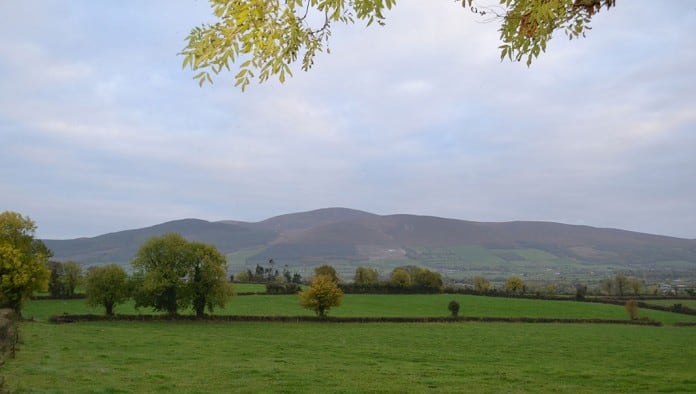
The killing of Bridget Cleary has become notorious as one of the most chilling murders in all of Ireland’s history.
At the time of her death in 1895, an entire country was shocked by the brutal nature of her demise. Even now, well over a century later, her murder remains one of the most talked about tales of the Emerald Isle.
Bridget Cleary is often referred to as the last of the witches to be burned in Ireland. That would be shocking enough in itself, but the details of the case are even more curious than that.
Tortured, burned and buried by her husband, Bridget Cleary was allegedly killed because she was not in fact Michael Cleary’s wife but had been replaced by a changeling.
Whilst this seems beyond imagining, at the time superstition was rife in rural Ireland, with faeries and changelings part of everyday folklore. But just what is truth behind this most heinous of crimes?
Biography of Bridget Cleary
Bridget Cleary was certainly a slightly unusual woman by the standards of the time, but there are no facts to point to anything untoward. Although witches, changelings and assorted superstitions were common cultural beliefs at the time, there is no evidence that Bridget Cleary had any particular interest in any these.
Certainly, prior to the death of her mother, she was regarded as a most level-headed woman. After her passing, Bridget Cleary would occasionally visit the stones of the faeries, but there is nothing to demonstrate she took a more active role in any kind of witchcraft.
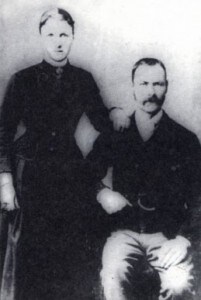
Born in 1867 near Clonmel, in the south of County Tipperary, she was the only daughter and youngest child of Patrick and Bridget Boland.
They were both staunch Catholics, and she was raised in the same vein, attending a convent school, as was quite normal for the time. She demonstrated an aptitude for needlework and became apprenticed to a dressmaker.
She went on to marry Michael Cleary, a cooper, who was nine years older than her. She and her husband lived in a cottage, along with her father, in the small village of Ballyvadlea. A confident woman, she was able to make her living as a seamstress and by selling eggs from her own hens.
Attractive and, unusually for the time, quite literate, she was by all accounts a respectable woman who strove only to better herself. Able to earn her own money, Bridget Cleary became accustomed to wearing gold jewellery and feathered hats rather than the plain shawls favoured by the rest of the village women.
Her success in business, stylish good looks and indisputable intelligence certainly set her apart.
The other notable difference between the Cleary marriage and that of others in the village was that theirs was childless. Whether this was due to ill health or bad luck or was by design is unclear, but it was certainly unusual for the time and would only have served to mark her out as different.
Changeling Folklore
Whilst there are many magical creatures that have a place in Irish folklore, there can be few that are as feared as the changeling, a faerie creature left in the place of a human baby. There are many reasons why the Fae are said to do this.
Faerie births can be very rare, and the results are not always healthy. Faerie folk are known to have a fascination for all things beautiful, so any baby born to them that may be sickly or deformed would immediately be cast out.
Instead, the Fae would take a healthy human back to their kingdom, leaving in its place the poorly Fae baby or even an enchanted log. This changeling would often die just a few weeks after birth, with the human parents none the wiser that an exchange had taken place.
If the child should survive, it would likely be wilful, bad-tempered and cold-hearted. Changeling babies are greedy, constantly needing to feed and extremely difficult to settle.
Should a family be cursed with such a child, they would know no happiness and the baby would suck all the joy and happiness from every aspect of their lives.
Adult changelings were regarded as far rarer, but this was exactly what Michael Cleary claimed had happened to his wife.
Bridget Cleary’s Darkest Hour
On the 4th of March, Bridget Cleary left her home to deliver some eggs to her father’s cousin, Jack Dunne, just a mile or so from her home. Jack and his wife were not home, and Bridget made her way back to her cottage.
The weather was cold, although not unseasonably so, but by the time she had reached her house Bridget was feeling poorly. She complained of a fever and a headache and was seized by shivering fits.
It is likely that she was suffering from bronchitis or tuberculosis, both common illnesses at the time, but her symptoms were taken by others to be something altogether more sinister.
A few days after Bridget was taken ill, Jack came round to visit. He was known as a Shanachie, or an Irish storyteller. Such men were renowned for their ability to recite old tales and legends of folklore as well as being deemed to be experts in matters of witchcraft and incantations.
His reputation may well have been enhanced by the fact that his cottage was said to be situated near a faerie ring on the sinister and foreboding Kylenagranagh Hill. Apparently, Jack took one look at the patient and declared it not to be Bridget but instead a faerie changeling.
This started off a catastrophic chain of events that would lead to poor Bridget’s violent death. Rumours spread that she was “away with the faeries”. For those who disliked her aloofness, were suspicious of her childlessness or were envious of her prosperity, faerie involvement was a perfect rationale.
Patrick Boland and Michael Cleary allegedly became concerned as her condition deteriorated over the next few days and sent word to the local doctor, Dr William Crean. However, he was unable to visit for several days.
When he did eventually make the trip, his diagnosis was that Bridget was suffering from bronchitis, but whether she actually received any medical treatment for this is unclear.
Meanwhile, the situation in the cottage took a drastic turn for the worse. Bridget had become even sicker, and when Jack Dunne visited again, she was to suffer even more. Jack and Michael had apparently sought advice from Denis Ganey, who resided at Kylatlea and was known locally as a herb man and faerie doctor.
He claimed to be able to cure all manner of faerie-induced ailments, and so began several days of torture for Bridget.
She was initially treated with concoctions made from herbs, which had originated with Denis Ganey. She was then soaked in urine and covered in hens’ dung. Although these rituals sounds outlandish, they were actually fairly commonplace at the time.
When these made no difference, worse was to come. There were a number of alleged treatments for those afflicted by a changeling curse, and each was tried on Bridget. These included burning her with a poker and holding her over a fire, both of which were said to force the changeling to reveal itself.
Over the next few days more and more family members and neighbours became involved, including her aunt, several of her cousins and one of their wives.
Events escalated, with Bridget being force-fed vile herbal concoctions whilst Michael demanded she answer the question “Are you Bridget Boland, wife of Michael Cleary, in the name of God?”
If she was able to do this three times, this would allegedly prove she was not a changeling, but in her weakened state this was a virtually impossible task.
This continued for several days, with Michael becoming more violent, and the others present in the house seemingly only encouraging him.
On the 15th of March it seemed that Bridget found the strength to give satisfactory replies and Michael calmed himself, stating that his wife was truly returned, but the peace was short-lived. After midnight he again became enraged, locking himself and the others in the cottage.
Bridget was stripped to her petticoats, doused in lamp oil and burned to death. On the 16th of March Bridget was reported missing by Michael Cleary, who claimed she had once again gone away with the faerie folk.
However, five days later her charred body was discovered in a shallow grave wrapped in a sheet, where Michael and Bridget’s cousin Patrick Kennedy had hastily buried her.
The Husband’s Defence
It hardly seems creditable, but Michael Cleary gave a sworn statement to the court that his Bridget Cleary had been taken and a changeling left in her place. Two of his reasons for claiming this was the case were that that the woman he had burned was too fine to be his wife and that she was also two inches taller.
Jack Dunne had said he also knew she could not be Bridget Cleary because she had one leg longer than the other, although how he could be exactly sure of this is unclear. Whether or not any credence can be given to Michael Cleary’s alleged belief his wife had been replaced by a changeling is impossible to determine. He may well have laboured under this delusion, or he may simply have seen it as a convenient motive for a most brutal murder.
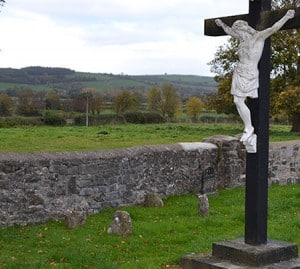
The presiding judge, Mr Justice O’Brien, paid little attention to the hysterical talk of witchcraft that surrounded the case, but he could do little to stem the frenzy of gossip that ensued.
However, it is interesting to note that at his trial Michael was convicted not of murder but of the lesser charge of manslaughter. He was sentenced to twenty years of hard labour, of which he served fifteen.
After his release he boarded a ship to Montreal and was never heard of again.
Several of the others involved in the killing were also given sentences of varying lengths.
With much of her family incarcerated and the local church unwilling to involve itself in the scandal, Bridget herself was eventually laid to rest by members of the local constabulary.
Buried quietly one evening outside the churchyard wall, she lies in an unmarked grave near that of her mother.
The Political Impact
One of the more unexpected consequences of Bridget’s death was the impact it would have on the decision of whether to allow Irish Home Rule.
The 1880s and 1890s saw a series of Land Acts passed that were designed to protect tenants.
Previously, they had largely been the victims of poor treatment by greedy landowners, and this legislation was drafted in order to give them more rights and improve their status.
However, in many cases this simply led to increased animosity between tenants and landowners, with the former vilified for setting farm animals loose or even slaughtering them.
The latter in turn resorted to evicting tenants with little regard for their well-being.
It was hoped that an end to this tension might be brought about by the introduction of Home Rule, granting more power to the people. However, the murder of Bridget Cleary and the subsequent media coverage were to prove highly damaging to this prospect.
The district inspector in Kilkenny, Pierris B. Pattison, sent a report to Dublin Castle stating that this local case had caused an incredible media frenzy.
The murder was even reported in British and American newspapers, so startling were the facts. Unionist-owned newspapers seized on the salacious details and used them as proof that the Irish people could not be trusted to self-govern.
If they were so credulous a people as to believe in such superstitions as witches, faeries and changelings, and so savage that they could commit such a brutal crime, then they were demonstrably unfit to be allowed to make decisions affecting government policy.
This so-called evidence of the mental degradation of the average Irish peasant was highly damaging.
The Bridget Cleary case, in conjunction with the highly publicised trial of Oscar Wilde, which followed just a month later, were both so injurious to the perception of the Irish character that Irish Home Rule was not deemed possible at that time.
Faery Murder or Cold-Blooded Killing?
So what is the truth behind the slaying of Bridget Cleary?
Was Michael Cleary frustrated at his wife’s childlessness and cruelly using the tenets of patriarchy to exact revenge on his wife before crafting a convenient excuse?
Did he genuinely believe that his beloved Bridget had been replaced by a changeling and that he was doing all he could to save her?
Were he and the others involved in her death subject to some kind of mass hysteria?
Or could it be that there is a grain of truth to the tale and that Bridget Cleary truly was not herself at the time of her death?
Whilst in a modern context it seems logical to presume that Michael Cleary and his fellow conspirators simply killed Bridget Cleary in cold blood. There is no denying that given the superstitious beliefs held in much of rural Ireland at the time, it would have taken very little persuasion for a community to be convinced that the slaying was indeed a faery murder.
Poor Bridget’s death continues even now to simultaneously fascinate and horrify, not least because from a contemporary perspective it seems impossible to understand just how such a killing could have been justified.
To lay the blame at the foot of changelings and claim faeries were involved seems incredible. Bridget Cleary herself would surely have hoped that her martyrdom was not in vain and that others accused of being witches would never undergo the brutal treatment she suffered.
The extraordinarily complex circumstances of the case and the role of her husband in her killing are still remembered throughout the land in a simple children’s rhyme.
Or are you the wife of Michael Cleary?”

